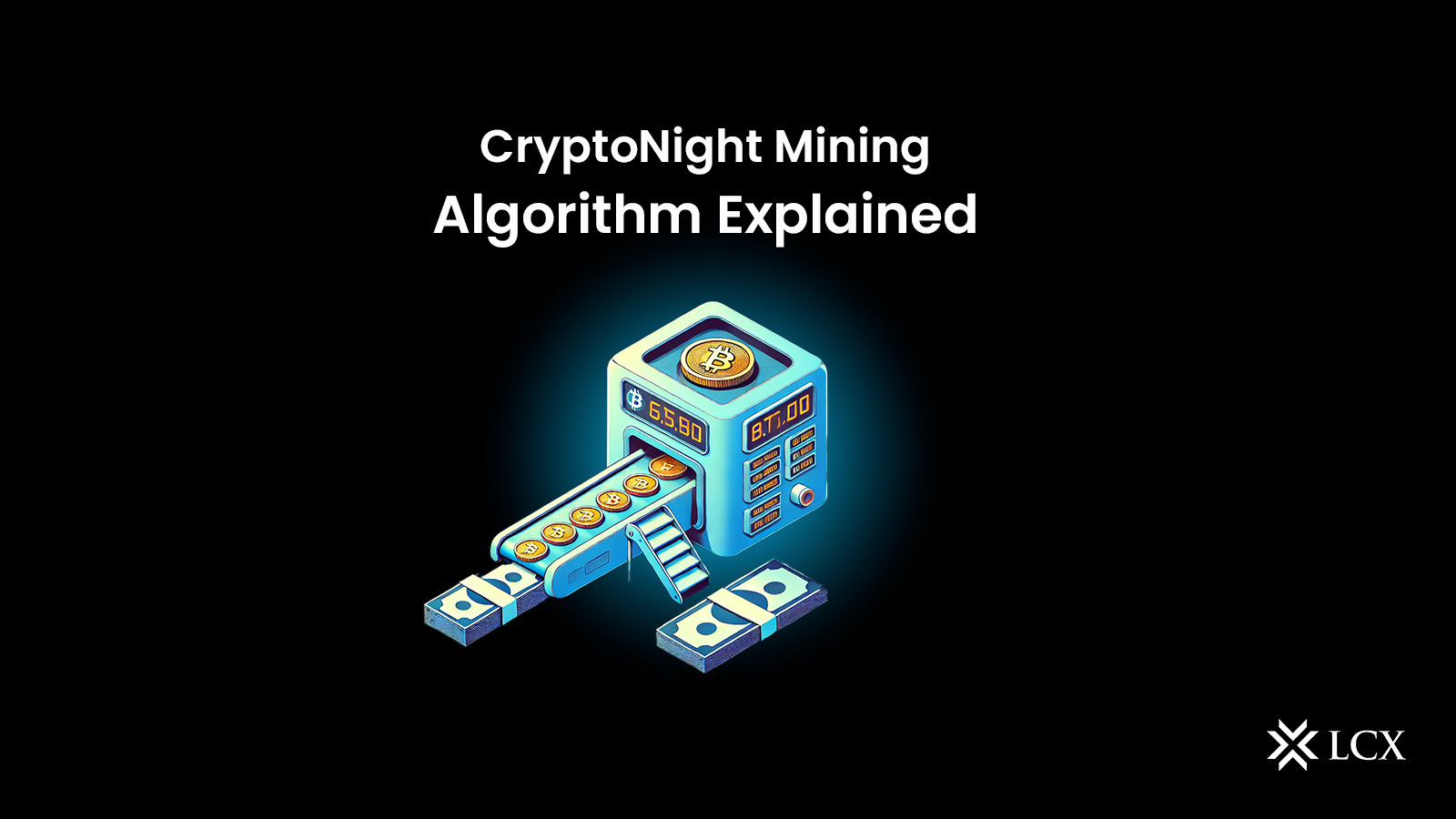Cryptocurrencies rely on various consensus mechanisms and mining algorithms to secure their networks and validate transactions. One such algorithm, Cryptonight, has played a significant role in the development of privacy-focused cryptocurrencies like Monero (XMR). Designed to be ASIC-resistant and CPU/GPU-friendly, Cryptonight was created to promote decentralized mining and enhance privacy features.
In this article, we’ll explore:
- The origins and purpose of Cryptonight
- How the algorithm works
- Its key features and variants
- The cryptocurrencies that use(d) it
- The rise and fall of Cryptonight in the face of ASIC mining
- Its impact on the crypto ecosystem
1. The Origins of Cryptonight
Cryptonight was introduced in 2013 as part of the CryptoNote protocol, a framework designed to improve privacy and decentralization in cryptocurrencies. The algorithm was developed in response to the growing dominance of ASIC (Application-Specific Integrated Circuit) miners in Bitcoin and other early cryptocurrencies, which led to mining centralization.
Key Goals of Cryptonight:
- ASIC Resistance: Make mining accessible to average users with consumer-grade hardware (CPUs and GPUs).
- Enhanced Privacy: Support privacy features like ring signatures and stealth addresses.
- Memory-Hard Design: Require significant memory usage to prevent optimization by specialized hardware.
Cryptonight became the backbone of Monero, one of the most well-known privacy coins, and was later adopted by several other cryptocurrencies.
2. How Cryptonight Works
Cryptonight is a Proof-of-Work (PoW) algorithm that differs significantly from Bitcoin’s SHA-256 or Litecoin’s Scrypt. Here’s a breakdown of its key mechanisms:
A. Memory-Bound Hashing
Unlike Bitcoin mining, which relies heavily on raw computational power (hashing speed), Cryptonight is designed to be memory-intensive. This means:
- Miners must use at least 2MB of fast memory per thread.
- The algorithm utilizes the CryptoNight hash function, which depends on random memory access patterns, making it difficult for ASICs to gain a significant advantage.
B. The Mining Process
- Input Hashing: The input data (block header) is hashed using Keccak (SHA-3).
- Scratchpad Initialization: A large scratchpad (memory buffer) is filled with pseudo-random data.
- Memory-Hard Computation: The algorithm performs a series of read/write operations on the scratchpad, ensuring that mining speed depends on memory latency rather than pure processing power.
- Final Hash: The scratchpad is processed again to produce the final hash, which must meet the network’s difficulty target.
This approach was meant to level the playing field between CPU, GPU, and FPGA miners while discouraging ASIC development.
3. Key Features of Cryptonight
A. ASIC Resistance (Initially)
Cryptonight’s memory-heavy design was intended to prevent ASIC dominance. However, as we’ll see later, ASIC manufacturers eventually adapted.
B. Support for Privacy Features
Cryptonight was built for privacy coins, integrating with:
- Ring Signatures: Mixes transactions to obscure sender identities.
- Stealth Addresses: Generates one-time addresses for recipients.
- Untraceable Payments: Makes transaction analysis difficult.
C. Energy Efficiency (Compared to SHA-256)
Because Cryptonight was optimized for CPUs and GPUs, it was less energy-intensive than Bitcoin’s SHA-256 mining, at least in its early days.
4. Cryptonight Variants and Upgrades
Due to ASIC threats and security concerns, Cryptonight underwent several modifications. Here are the most notable variants:
| Variant | Key Changes | Used By |
|---|---|---|
| Cryptonight v0 | Original version | Bytecoin, early Monero |
| Cryptonight v1 (Monero v7) | Tweaked to resist early ASICs | Monero (2017) |
| Cryptonight-Lite | Lighter version for faster blockchains | Aeon (AEON) |
| Cryptonight-R (RandomX precursor) | Introduced random code execution | Monero (2018) |
| Cryptonight-GPU | Optimized for GPU mining | Sumokoin (SUMO) |
Monero’s Fork Away from Cryptonight
Monero, the most prominent Cryptonight-based coin, abandoned the algorithm in 2019 in favor of RandomX, a CPU-centric algorithm designed to maintain ASIC resistance.
5. Cryptocurrencies That Used Cryptonight
Several privacy-focused and general-purpose cryptocurrencies adopted Cryptonight at some point:
- Monero (XMR) – The most well-known Cryptonight coin (switched to RandomX).
- Bytecoin (BCN) – The first CryptoNote-based cryptocurrency.
- Aeon (AEON) – A lightweight version of Monero using Cryptonight-Lite.
- Sumokoin (SUMO) – Focused on enhanced privacy with Cryptonight-GPU.
- Electroneum (ETN) – A mobile-friendly cryptocurrency that initially used Cryptonight.
Many of these projects either forked to new algorithms or became obsolete due to ASIC dominance.
6. The Rise of ASICs and the Decline of Cryptonight
Despite its ASIC-resistant design, Cryptonight eventually succumbed to specialized hardware. Here’s how it happened:
A. Early ASIC Development (2017-2018)
- Bitmain, the leading ASIC manufacturer, released the Antminer X3 in 2018, designed for Cryptonight.
- Other companies, like Baikal and Halong Mining, also produced Cryptonight ASICs.
B. Monero’s Response: Algorithm Changes
To combat ASIC centralization, Monero implemented scheduled hard forks every 6 months, tweaking Cryptonight to break ASIC compatibility.
- March 2018: Cryptonight v7 (to block Bitmain’s X3).
- October 2018: Cryptonight-R (random variant).
Eventually, Monero abandoned Cryptonight altogether in favor of RandomX (2019), a CPU-friendly algorithm.
C. The Aftermath
- Many Cryptonight coins lost their ASIC resistance.
- Some projects (like Aeon) continued using modified versions.
- Others (like Electroneum) switched to alternative algorithms.
7. Cryptonight’s Legacy and Impact
Despite its decline, Cryptonight played a crucial role in cryptocurrency history:
A. Advancements in Privacy Tech
Cryptonight helped popularize untraceable transactions and inspired future privacy solutions.
B. The ASIC Resistance Debate
It proved that long-term ASIC resistance is difficult but also pushed innovation in decentralized mining.
C. Influence on New Algorithms
Monero’s RandomX and other memory-hard algorithms were inspired by Cryptonight’s principles.
Conclusion: The End of an Era
Cryptonight was a groundbreaking algorithm that democratized mining and enhanced privacy in cryptocurrencies. While it ultimately lost the battle against ASICs, its legacy lives on in newer, more resilient algorithms.
For miners and privacy advocates, Cryptonight remains a symbol of the ongoing struggle between decentralization and centralization in the crypto world. As blockchain technology evolves, the lessons learned from Cryptonight will continue shaping the future of fair and private cryptocurrencies.
